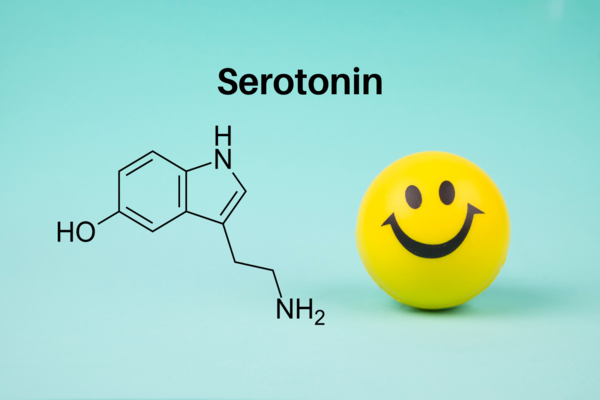Sleep – The Neuroscience Behind The Most Vital Part of Life
Introduction
What is sleep? Did you ever try to answer this question? Imagine this: An alien arrives on Earth and wonders what is sleep. “Why are you unplugged for 6-8 hours every day?” He might ask. How do you properly address such a simple question?
Well, firstly sleep is a vital part of life, and it is something that everyone needs. It is a natural and essential state of being for all living creatures, including humans. A time when the body and mind undergo critical restorative processes, allowing us to recharge for the day ahead.
Is this enough? No, I don’t think so!
Sleep is a fundamental aspect of human life, yet it remains one of the least understood processes of the brain. Scientists have long been fascinated by the neuroscience of sleep, as it plays a crucial role in our mental and physical well-being. In recent years, advancements in technology and imaging techniques have allowed researchers to delve deeper into the inner workings of the sleeping brain uncovering new insights into the complex mechanisms that underlie this essential biological process.

In this article, we will provide an overview of the neuroscience of sleep. Based on the latest research and discoveries we will explore the different stages of sleep, the brain areas involved in it, and the neural mechanisms that regulate it.
The Stages of Sleep
There are two main stages of sleep: Non-REM and REM sleep. Non-REM sleep is further divided into four stages: N1, N2, N3, and N4. N1 and N2 are lighter stages, while N3 and N4 are deeper stages of sleep. REM (Rapid Eye Movement) sleep is the stage where dreaming occurs.
During N1, which is the lightest stage of sleep, the brain waves slow down, and muscle activity decreases. People in this stage can easily wake up, and they may experience sudden muscle contractions or jerks. N2 is the next stage, and during this stage, brain waves continue to slow down, and the body temperature decreases. People spend more time in this stage than any other. During N3 and N4, also known as slow-wave sleep (SWS), the brain waves slow down even more, and the body is almost immobile. It is difficult to wake someone up from this stage. Even if they do wake up, they may feel disoriented or groggy.

REM sleep is the stage where dreaming occurs, and it is characterized by rapid eye movement and muscle paralysis. In the time of REM sleep, your brain activity picks up, and your eyes move rapidly back and forth. During this stage, the brain waves are similar to those during wakefulness, and the heart rate and breathing become irregular. REM sleep is essential for cognitive function and plays a crucial role in memory consolidation and emotional regulation.
Brain Areas Involved
Sleep is regulated by a complex network of brain areas that work together to control the different stages of sleep. The main brain areas involved in the most vital part of life are the hypothalamus, thalamus, basal forebrain, and brainstem.
The thalamus is a sensory gateway that processes information from the senses and relays it to the cortex. It also plays a role in regulating sleep by filtering out sensory information during sleep. This feature may prevent the brain from being overwhelmed.
The basal forebrain is a group of neurons located at the base of the brain that produces the neurotransmitter acetylcholine. Acetylcholine plays a crucial role in promoting wakefulness, and its levels decrease during sleep.

Then it’s the brainstem. A region at the base of the brain that controls vital functions such as breathing, heart rate, and blood pressure. It also contains the reticular activating system (RAS), which is responsible for regulating wakefulness and alertness.
Last but not least, is the hypothalamus. It is a small area at the base of the brain that plays a crucial role in regulating sleep. It contains a group of neurons called the suprachiasmatic nucleus (SCN), which is the body’s master clock. The SCN regulates the circadian rhythms, which is the body’s internal clock that controls the sleep-wake cycle.
Neural Mechanisms that Regulate Sleep
So, how does your brain know when it’s time to turn off? Sleep is regulated by a complex interplay of neural mechanisms that work together to control the different stages of sleep and wakefulness. The main mechanisms involved in its regulation are the circadian rhythm, the sleep-wake homeostasis, and the ultradian rhythm.
Circadian Rhythms
Circadian rhythms refer to the internal biological processes that follow a 24-hour cycle and regulate a variety of physiological and behavioral functions. These rhythms are present in almost all living organisms, including humans. A group of nerve cells in the brain called the suprachiasmatic nucleus (SCN) regulates the body’s internal clock. The SCN receives signals from the eyes that help it determine whether it is day or night. Then it uses this information to regulate the release of hormones and other physiological processes that influence our sleep, wakefulness, hunger, and other bodily functions.
The circadian rhythms play a crucial role in maintaining overall health and well-being, as they help to ensure that various bodily processes are properly timed and synchronized with the external environment. These rhythms influence the sleep-wake cycle, body temperature, hormone production, metabolism, and immune system function, among other bodily functions. Disruptions to these rhythms, such as those caused by shift work, jet lag, or an irregular sleep schedule, can significantly negatively affect health. These may include an increased risk of metabolic, cardiovascular, and mood disorders.
Either control them or they control you!
The timing and duration of sleep are closely tied to circadian rhythms. The circadian clock regulates the release of the hormone melatonin, which is responsible for promoting sleepiness. Melatonin levels increase in the evening and reach their peak in the middle of the night, and then gradually decrease as morning approaches. This process helps to promote healthy sleep patterns, with the majority of sleep occurring during the nighttime hours.
In addition to regulating sleep, circadian rhythms also play a role in regulating mood, alertness, and cognitive function. For example, research has shown that individuals who are exposed to light at night may experience disruptions in their circadian rhythms, which can lead to mood disorders such as depression and anxiety. This is because light exposure at night can interfere with the production of melatonin, which in turn can disrupt the sleep-wake cycle and other physiological processes that are regulated by the circadian rhythms.

Several strategies can help to regulate circadian rhythms and promote healthy sleep patterns. The best strategy is to maintain a regular schedule, by going to bed and waking up at the same time every day, even on weekends. This can help to ensure that the body’s internal clock remains in sync with the external environment. Exposure to natural light during the day, particularly in the morning, can also help to regulate circadian rhythms and promote the desired healthy patterns. Conversely, exposure to bright light at night should be minimized, as it can interfere with the production of melatonin and disrupt the sleep-wake cycle.
Sleep-wake homeostasis
The sleep-wake homeostasis is a critical mechanism that regulates the amount and quality of sleep that an individual needs. It is based on the idea that the longer someone is awake, the more likely they are to feel sleepy, and vice versa. This concept was first introduced in the early 20th century by the French physiologist, Alfred Batelli.
The sleep-wake homeostasis mechanism is regulated by a neurotransmitter called adenosine. Adenosine levels in the brain gradually increase during waking hours, reflecting the activity of the brain’s cells. As adenosine levels rise, it inhibits the activity of neurons that promote wakefulness. Hence, it promotes the activity of neurons that promote sleepiness. This process builds up over the day until you reach a certain level of sleepiness which send you to bed.
It’s coffee time!
And here is where caffeine comes in. We all know that caffeine is a stimulant that is commonly consumed not only to improve cognitive performance but also to promote wakefulness. The way that caffeine can have this significant impact on promoting wakefulness is by affecting sleep-wake homeostasis.

More specifically, caffeine works by blocking the activity of adenosine receptors in the brain. This means that caffeine can reduce the buildup of adenosine and inhibit its sleep-promoting effects. Hence, when caffeine is consumed, it promotes wakefulness and can delay the onset of sleepiness.
However, the effects of caffeine on sleep-wake homeostasis are not entirely straightforward. While caffeine can promote wakefulness in the short term, it can also disrupt the body’s natural sleep-wake cycle and lead to long-term disturbances of it. Studies have shown that consuming caffeine close to bedtime can significantly reduce the quality of sleep and lead to increased sleep latency, or the amount of time it takes to fall asleep. This is because caffeine can remain in the bloodstream for several hours after consumption, and its effects can last well into the night.
Also, regular caffeine consumption can lead to tolerance, which means that the body becomes less responsive to its effects over time. This can lead to a cycle of increasing caffeine consumption to maintain wakefulness, which can further disrupt the natural sleep-wake cycle. Furthermore, caffeine can also interfere with the timing and duration of sleep. Studies have shown that consuming caffeine in the afternoon or evening can delay the onset of sleep and reduce the amount of slow-wave sleep, which is a crucial stage for a night of restorative and restful sleep.
So, remember folks, coffee is a great tool when used moderately!
Back to sleep-wake homeostasis
This homeostasis mechanism is essential for maintaining the body’s natural sleep-wake cycle, which is critical for optimal physical and mental health. When an individual sleeps, adenosine levels in the brain decrease, allowing the neurons that promote wakefulness to become more active. This helps an individual to feel more alert and awake upon waking up, and to be able to perform daily activities more effectively.
Disruptions to the sleep-wake homeostasis mechanism can have significant negative impacts on an individual’s overall health and well-being. For example, people who are deprived of sleep for prolonged periods may experience fatigue, decreased cognitive function, mood disturbances, and a range of other negative effects. This can lead to decreased productivity, impaired decision-making, and increased risk of accidents and injuries.
There are several ways to help regulate the sleep-wake homeostasis mechanism and promote better sleep hygiene. Again the best way is to maintain a consistent bedtime schedule. Further to this, remember to avoid caffeine and alcohol before bedtime. As was already mentioned these substances can interfere with sleep quality and quantity. In addition, engaging in regular physical activity promotes better sleep, as can a comfortable bedroom that is quiet, dark, and cool.
The Ultradian Rhythms
Ultradian rhythms are biological rhythms that occur more than once a day, with a frequency of fewer than 24 hours. These rhythms are distinct from circadian rhythms, which occur once a day. Ultradian rhythms are present in a wide range of biological processes, including hormone secretion, appetite regulation, and of course, sleep patterns. In the context of sleep, ultradian rhythms refer to the natural cycles of sleep stages that occur throughout the night.
In regard to sleep..
During sleep, the body goes through a series of cycles that typically last around 90-110 minutes. Each cycle consists of several stages, including light, deep, and rapid eye movement (REM) sleep. These stages are characterized by different patterns of brain activity, muscle tone, and eye movement. Each cycle typically ends with a brief period of wakefulness before the next cycle begins.
Within each cycle, there are also ultradian rhythms that occur. These rhythms refer to the natural oscillations of sleep stages that happen within each cycle. For example, during the first cycle, there may be a period of deep, restorative sleep (non-REM stage 3) followed by a shorter period of lighter sleep (non-REM stage 2) before entering REM sleep. In subsequent cycles, the amount of time spent in deep sleep may decrease, while the amount of time spent in lighter and REM sleep may increase.
These ultradian rhythms are thought to play an important role in maintaining healthy sleep patterns. The deep, restorative sleep that occurs during non-REM stage 3 is crucial for physical and mental restoration. While REM sleep is important for cognitive processing and memory consolidation.
Disruptions to these ultradian rhythms can lead to sleep disorders and other health problems. Namely, people with sleep apnea may experience disruptions in their sleep cycles due to interruptions in breathing while they are sleeping. These interruptions lead to reduced amounts of deep and REM sleep. Similarly, people with insomnia may have difficulty falling or staying asleep, leading to disruptions in their natural sleep cycles.
There are several ways to promote healthy ultradian rhythms and improve sleep quality. And again the most important way is to establish regular sleep habits and maintain a consistent “going to bed” schedule.
Neurotransmitters Involved in Sleep
Now, let’s talk neurotransmitters the chemical messengers that transmit signals between neurons in the brain. Several neurotransmitters are involved in regulating sleep, including serotonin, dopamine, norepinephrine, and acetylcholine.
Serotonin is a neurotransmitter that plays a crucial role in regulating mood and sleep. It is involved in promoting REM sleep and regulating the sleep-wake cycle. Low levels of serotonin have been linked to insomnia and other sleep disorders.
Dopamine is a neurotransmitter that is involved in regulating reward and motivation. However, it is also involved in promoting wakefulness and reducing the duration of REM sleep. In general keep in mind when you are sleeping dopamine levels are at their lowest. And this might be the reason why you might wake up at night, or before the alarm hits when you are traveling the upcoming day. The anticipation of the trip makes the dopamine levels rise and wakes you up!
Norepinephrine is a neurotransmitter that is involved in regulating attention, arousal, and stress. In this way, norepinephrine acts as an arousal-promoting neurotransmitter that helps keep you awake and alert. During waking hours, its levels in the brain are high, helping to promote wakefulness and maintain our attention and focus. As we start to feel tired, norepinephrine levels gradually decrease, allowing for other neurotransmitters such as adenosine and melatonin to take over and promote sleep.
Acetylcholine is a neurotransmitter that is involved in regulating wakefulness and REM sleep. It is produced by neurons in the basal forebrain and promotes wakefulness. During REM sleep, acetylcholine levels increase, which is believed to be responsible for the muscle paralysis that occurs during this stage.
Sleep Disorders
Sleep disorders are a group of conditions that affect the quality and quantity of sleep. They can be caused by a variety of factors, including genetics, lifestyle, and environmental factors. Some common disorders include insomnia, sleep apnea, restless leg syndrome, and narcolepsy.
Insomnia
Insomnia is a sleep disorder characterized by difficulty falling or staying asleep, waking up too early, and having difficulty falling back asleep. It can be acute, lasting for a short period, or chronic, lasting for three or more nights per week for at least three months. Insomnia can be caused by a variety of factors. In particular, stress, anxiety, depression, medical conditions, medications, and environmental factors such as noise, light, and temperature.

The effects of insomnia can be significant, leading to daytime sleepiness, fatigue, difficulty concentrating, irritability, and other mood disturbances. Chronic insomnia can also increase the risk of developing other health problems such as depression, anxiety disorders, and cardiovascular disease.
Treatment for insomnia typically involves identifying and addressing the underlying causes of the condition, as well as implementing good sleep habits and relaxation techniques. This may include cognitive behavioral therapy to identify and change negative thoughts and behaviors related to sleep. In some cases, the individual might need prescription medications. Lifestyle changes such as regular exercise, a healthy diet, and stress management techniques can also be effective in managing insomnia.
Sleep Apnea
Apnea is a disorder characterized by interruptions in breathing during sleep. There are two main types of apnea: obstructive sleep apnea, which is caused by a blockage in the airway, and central sleep apnea, which is caused by a failure of the brain to signal the muscles to breathe. Symptoms of apnea include loud snoring, gasping or choking during sleep, and excessive daytime sleepiness.
Untreated apnea can lead to a range of health problems, including high blood pressure, heart disease, stroke, and diabetes. It can also lead to fatigue, irritability, and difficulty concentrating during the day.
Treatment for sleep apnea may involve lifestyle changes such as weight loss, and avoiding alcohol and sedatives before bedtime. Even sleeping on one’s side rather than back might help. Continuous positive airway pressure therapy is a common treatment for sleep apnea, which involves wearing a mask over the nose or mouth that delivers a continuous stream of air to keep the airway open during sleep. Other treatments may include oral appliances, surgery, or medications to help regulate breathing during sleep.
Restless leg syndrome
Did you ever hear about restless leg syndrome? A sleep disorder characterized by an uncomfortable sensation in the legs that occurs during periods of rest or inactivity. It can lead to difficulty falling asleep or staying asleep.
Restless leg syndrome (RLS), also known as Willis-Ekbom disease, is a neurological disorder that causes an irresistible urge to move the legs. People with RLS may experience uncomfortable sensations in their legs, such as itching, crawling, tingling, or burning. Usually can be temporarily relieved by moving or stretching the legs. Symptoms of RLS tend to be worse at night or when lying down for extended periods, which can make it difficult to fall and stay asleep.
The exact cause of RLS is not fully understood. It is believed though to be related to an imbalance of dopamine (regulate movement). RLS can occur independently or be associated with other medical conditions such as iron deficiency anemia, kidney disease, or even pregnancy.
Treatment for RLS may involve addressing any underlying medical conditions. Medications can also help to regulate dopamine levels in the brain. Once more time lifestyle changes such as regular exercise, avoiding caffeine and alcohol, and implementing good sleep habits. In some cases, alternative therapies such as acupuncture or massage may also be beneficial.
Narcolepsy
Narcolepsy is a neurological disorder that affects the brain’s ability to regulate sleep-wake cycles. It is characterized by excessive daytime sleepiness, sudden and uncontrollable episodes of falling asleep, and sleep paralysis – a temporary inability to move or speak while falling asleep or waking up. Other symptoms of narcolepsy may include hallucinations, cataplexy (sudden loss of muscle tone triggered by strong emotions), and disrupted nighttime sleep.
The cause of narcolepsy seems to be related to a loss of neurons in the brain that produce hypocretin, a chemical that helps regulate wakefulness. Narcolepsy can occur on its own, or it may be associated with other medical conditions such as autoimmune disorders or infections.
Treatment for narcolepsy typically involves medications to help regulate sleep-wake cycles, such as stimulants to improve alertness during the day and antidepressants to help manage cataplexy and other symptoms. And guess what could help to manage narcolepsy symptoms? Yes, exactly, implement good sleep habits, as we discussed before.
Takeaway
All right let’s wrap our heads around the mind-blowing world of the neuroscience of sleep. We’ve delved into the intricate web of brain regions and chemical messengers that regulate the timing and quality of our precious sleep, and we’ve learned about the sleep-wake homeostasis, circadian rhythms, and ultradian rhythms that govern our sleep patterns.
But let’s not forget about the real-world impact of sleep disorders on our physical, mental, and emotional health. Insomnia, sleep apnea, restless leg syndrome, and narcolepsy can throw a serious wrench into our systems and can leave us feeling drained and exhausted.

Thankfully, thanks to the wonder of modern science, we have effective treatments for these disorders that can get us back to catching those elusive Z’s. Whether it’s CPAP therapy for sleep apnea, medications to regulate dopamine levels in the brain for restless leg syndrome and narcolepsy, or implementing good habits to ward off insomnia, we have the tools to get the sleep we need.
Keep also in mind that the importance of sleep goes beyond just feeling rested and alert. A good night’s rest is crucial for our physical health, mental clarity, and our emotional well-being. It affects everything from our immune system to our mood to our decision-making abilities. So, whether you’re a sleep lover or a self-proclaimed night owl, it’s important to prioritize and take care of your sleep system.
In short, sleep is no joke, folks. It’s a crucial aspect of our overall health and well-being, and we need to continue to explore the fascinating world of the neuroscience of sleep to better understand the mechanisms that govern its patterns and to develop even more effective treatments for relevant disorders.
So, get cozy, catch those Z’s, and dream big, folks. The world of sleep is waiting for you.

References
- C. Falup-Peucurariu et al. (2021). Neurobiology of sleep (Review). Experimental and therapeutic medicine.
- G. R. Poe, C. M. Walsh, T. E. Bjorness (2010). Cognitive neuroscience of sleep. Progress in Brain Research.
- E. Miletinova, J. Buskova (2021). Functions of Sleep. Physiological Research.
- C. A. Czeisler, J. J. Gooley (2007). Sleep and circadian rhythms in humans. Cold Spring Harbor Symposia on Quantitative Biology.
- E. Urry, H. P. Landolt (2014). Adenosine, Caffeine, and Performance: From Cognitive Neuroscience of Sleep to Sleep Pharmacogenetics. Sleep, Neuronal Plasticity, and Brain Function.
- J. M. Siegel (2004). The Neurotransmitters of Sleep. The Journal of Clinical Psychiatry.
- W. J. Joiner (2018). The Neurobiological Basis of Sleep and Sleep Disorders. PHYSIOLOGY.

